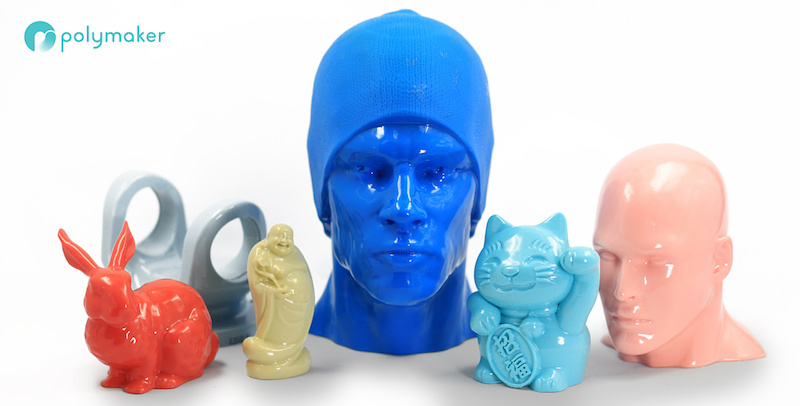Polymaker Introduces PolySmooth and Polysher in the World of 3D Printing
Polymaker, the filament specialists have now entered the 3D printing hardware arena as well. The company recently revealed their new aerosol based cleaning unit named as Polysher that can convert 3D printed objects into stupendous sculptures that can easily deliver competition to injection-moulded ones. With their newly launched PolySmooth™ PVB filament, that reacts to the aerosol, here is one solution for 3D printing that can work for different manufacturing processes.
The Company and its Vision
Polymaker has been conversant with the development of high performance 3D printable filaments that are helpful for product designers. They are used primarily for prototyping, with the help of the layered results. In terms of surface smoothness, these moulds are better than injection-based processes. One of the biggest disadvantages for working with 3D printed parts is their poor quality. The company is trying to bridge the gap and introduce 3D printing to making final products, instead of just prototypes.
The Inner Workings of the Polymaker
At its heart, this Polymaker solution consists of the Polysher desktop machine and the PolySmooth PVB filament that can be combined with any 3D printer in the market. With the help of the filament, one can create 3D printed objects any time without having to create any support structures. The simple and intuitive interface works because Polysher makes sure that the coarse, layered surface gives way to a fine glossy print that can rival any finished project too.
- The cleaning process of the machine takes about 20 to 40 minutes, followed by the mandatory drying process
- There is an automatic lifting unit that helps in taking the parts out
- The cleaning unit depends on an equally distributed aerosol that contains alcohol for creating stunning 3D products
- The component called nebulizer consists of a thin membrane with multiple holes attached to a unique piezoelectric actuator.
- The unit sprays miniscule droplets through the nebulizer to ensure an even coat
- The alcohol then destroys the outer layers of the print thus delivering a smooth external surface
- With no heat involved in the process, the enclosed chamber is safe to use.
- The PolySmooth PVB filament on the other hand has excellent printing characteristics
- It 3D prints at temperatures ranging from 190 to 210 degrees Celsius for building the surface
The final products can feature mechanical properties with the final products resulting from other processes, with higher tensile strength and better impact strength too. Polymaker’s debut in the world of 3D printing is becoming a big thing as they sign up with Pragmatic Designs, Inc. and Gyre9 for a trendy look of their product. The alliance reiterates the fact about the product being a game-changer in the market. The company has even roped in strategic supply chain coordinator Mascon for manufacturing the products.
The Development, Marketing and Delivery of the Product
The Polysmooth filament development is completed in the company’s own factory while Polysher is said to be in production with about 80 percent of the tasks finished. The company has resorted to Kickstarter for crowd-funding the final steps of development and the costs involved in releasing the first batch of Polyshers. The early adopters out there can get the Polysher/Polysmooth kit for just about $199 while the company is planning to ship the product by September 2016 to all their backers.
Since the product is new and set to affect the 3D printing market in a strong manner, it is rest assured that any investment with the Polymaker is bound to be interesting.





